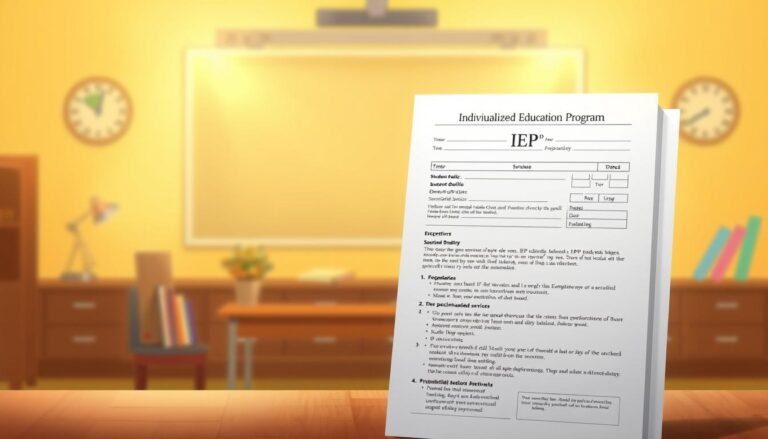
Anxiety Alarm Bells: Early Signs That Indicate a Disorder is Emerging
Introduction
In a world characterized by constant hustle and high expectations, the emergence of anxiety disorders is becoming increasingly common. Many individuals exhibit signs that serve as anxiety alarm bells, warning them of the potential development of a disorder. Understanding these early signs is imperative not just for early intervention, but also for reclaiming mental well-being before a minor issue escalates into a severe disorder.
This article provides an in-depth examination of anxiety alarm bells and aims to equip readers with the knowledge to identify early warning signals. By recognizing these signs and taking proactive steps, individuals can foster resilience and promote mental wellness.
Understanding Anxiety and Its Disorders
Anxiety is the body’s natural response to stress. It can manifest in various forms, including generalized anxiety disorder (GAD), social anxiety disorder, panic disorder, and more. The Anxiety Alarm Bells: Early Signs That Indicate a Disorder is Emerging are crucial for identifying someone who is struggling, even if they may not yet realize it themselves.
The Prevalence of Anxiety Disorders
According to the Anxiety and Depression Association of America, anxiety disorders affect over 40 million adults in the U.S. alone. This overwhelming statistic underscores the urgency for awareness and education regarding early signs of anxiety disorders.
| Disorder Type | Prevalence |
|---|---|
| Generalized Anxiety Disorder | 6.8 million |
| Panic Disorder | 6 million |
| Social Anxiety Disorder | 15 million |
Early Signs of Anxiety: Recognizing the Alarm Bells
1. Changes in Sleep Patterns
One of the first anxiety alarm bells people notice is a shift in their sleep patterns. Trouble falling asleep, waking up frequently during the night, or experiencing restless sleep can all indicate that anxiety may be surfacing.
Case Study: Sarah’s Struggle with Sleep
Sarah, a 28-year-old marketing professional, began to notice that she was restless at night. She often credited her sleeplessness to caffeine consumption, but the reality was that her mind was racing with worry and stress over deadlines. Understanding the connection between her anxiety and sleep disturbance was the first step in addressing her mental health.
Analysis: Sarah’s case highlights the importance of recognizing sleep issues as a potential signal of underlying anxiety. Addressing these issues can lead to effective coping mechanisms.
2. Irritability and Mood Swings
Heightened irritability and frequent mood changes are hallmark signs of anxiety. If you find yourself snapping at loved ones or feeling overwhelmed over minor inconveniences, it might be time to pay attention.
Case Study: Tom’s Frustration
Tom, a college student, began feeling irritable and angry at seemingly trivial matters. A sudden breakup with his girlfriend prompted an avalanche of emotional responses that seemed out of character.
Analysis: Tom’s emotional state illustrates how interpersonal stressors can compound existing anxiety, leading to pronounced irritability. Understanding this connection can aid in managing feelings before they escalate.
3. Physical Symptoms
Anxiety can manifest through a range of physical symptoms—headaches, stomach issues, and muscle tension are just a few examples. These physical manifestations can sometimes overshadow the emotional turmoil.
Table: Common Physical Symptoms of Anxiety
| Symptom | Description |
|---|---|
| Headaches | Tension headaches often associated with stress. |
| GI Issues | Nausea, diarrhea, or other stomach issues. |
| Muscle Tension | Generalized tightness, especially in the neck and shoulders. |
4. Increased Sensitivity to Stress
If minor setbacks feel monumental or overwhelming, it might be a sign that anxiety is on the rise. Increased sensitivity to stress can lead to an inability to cope with daily challenges.
Case Study: Emily’s Work Challenge
Emily struggled to deliver a simple presentation at work. What should have been routine became an anxiety-inducing event, forcing her to withdraw and avoid future presentations.
Analysis: Emily’s situation showcases how anxiety can distort one’s perception of reality, making everyday tasks feel insurmountable. Recognizing this signal is crucial for timely intervention.
5. Social Withdrawal
If you find yourself pulling away from social engagements or avoiding activities you once enjoyed, these could be key anxiety alarm bells. Social anxiety can lead to isolation, further compounding feelings of loneliness and despair.
Case Study: Jake’s Isolation
Jake, an extroverted art teacher, suddenly found himself unable to attend social gatherings. He feared judgment from his peers and felt crippling anxiety in social settings.
Analysis: Jake’s experience emphasizes the importance of social interaction for mental health. Early recognition of this withdrawal can inspire individuals to seek support before anxiety hardens into a more robust disorder.
Proactive Steps to Address Anxiety Alarm Bells
1. Better Sleep Hygiene
Improving sleep patterns is vital. Establishing a nighttime routine, limiting screen time, and mindfulness can help combat anxiety-induced insomnia.
2. Cognitive Behavioral Therapy (CBT)
CBT has proven effective against various anxiety disorders. By addressing negative thought patterns, individuals can learn coping strategies that empower them.
3. Physical Exercise
Regular physical activity can reduce symptoms of anxiety. Engaging in exercise releases endorphins, which can elevate mood and reduce stress.
4. Mindfulness and Meditation
Practicing mindfulness and meditation can ground individuals in the present, minimizing anxiety-driven thoughts. Simple breathing exercises can significantly alleviate symptoms.
5. Seeking Professional Help
If anxiety alarm bells persist, reaching out for professional help is crucial. Therapists and counselors can provide tailored strategies for managing anxiety before it evolves into a disorder.
Conclusion
Recognizing the anxiety alarm bells is the first step in preventing a full-blown disorder. By understanding the early signs and taking proactive steps, you can reclaim your mental health and foster a peaceful state of mind. Embracing techniques such as better sleep hygiene, CBT, exercise, and mindfulness can lead to a more resilient version of yourself.
FAQs
1. What are common early signs of anxiety?
Common early signs include changes in sleep patterns, irritability, physical symptoms, increased sensitivity to stress, and social withdrawal.
2. How can I differentiate between regular stress and anxiety?
While stress is a natural response to challenges, anxiety persists even when the stressor is removed. If feelings of anxiety remain intense and disruptive, it may signal a disorder.
3. Can anxiety disorders be treated effectively?
Yes, anxiety disorders can be treated effectively with various approaches, including therapy, medication, and lifestyle changes.
4. What role does diet play in managing anxiety?
Certain foods can impact anxiety levels. A balanced diet, rich in whole grains, fruits, vegetables, and omega-3 fatty acids, can help stabilize mood and reduce anxiety.
5. Is it normal to feel anxious at times?
Yes, occasional anxiety is part of the human experience. However, when it disrupts daily life or relationships, it’s critical to seek appropriate help.
Recognizing anxiety alarm bells is your path to proactive mental health management. Don’t hesitate to take the initiative toward healing and recovery; your well-being is worth it.















